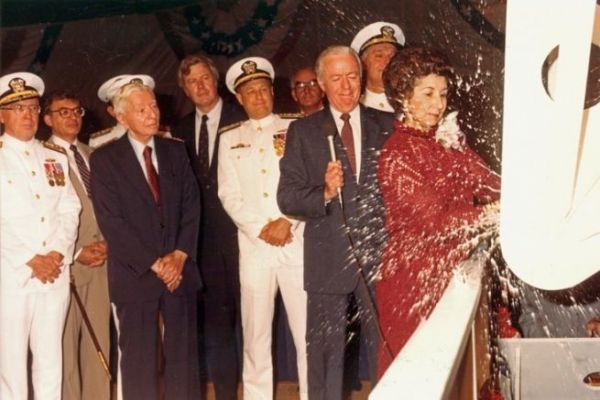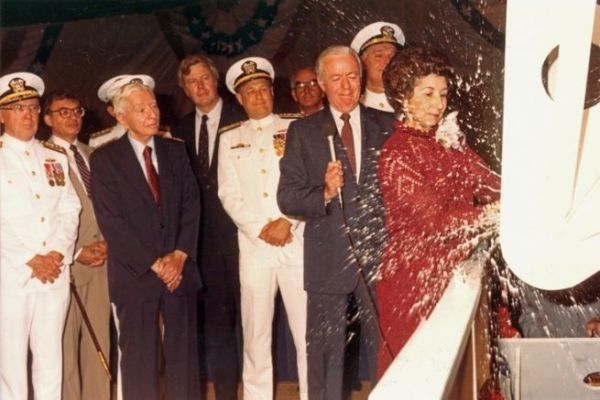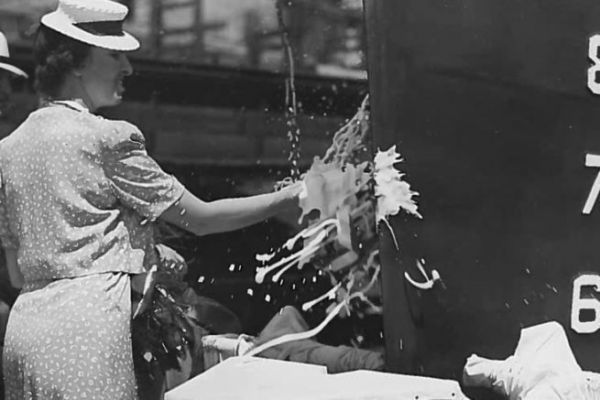When it's time to launch a boat, owners indulge in a tradition that has become almost immutable: breaking a bottle, usually of champagne, on the bow. Despite its ancient ritual origins, today this practice is associated with celebration. Let's find out where the idea for the bottle came from.
The "standing cup" ceremony
Although the liturgical aspects of ship blessings continued in Catholic countries, the Reformation interrupted them in Protestant Europe for a time. In the 17th century, English launches were secular events.
The blessing party for the warship Prince Royal, a 64-gun vessel, in 1610 included the Prince of Wales and shipbuilder Phineas Pett, master carpenter at Woolwich Shipyard. The latter described the events:
''The noble prince... accompanied by the lord admiral and the great lords, was on the forecastle, where the great golden cup was ready, filled with wine to name the ship as soon as she was afloat, according to ancient custom and the ceremony performed on such occasions, and tossing the cup upright over the side.
His Highness standing on the forecastle with a selected company only, besides the trumpeters, with much expression of princely joy, and with the ceremony of drinking from the standing cup, threw all the wine forward to the half-hull, and solemnly calling him by the name of Prince Royal, the trumpets sounding at the same time, with many gracious words for me, he gave me the standing cup in my hands.''
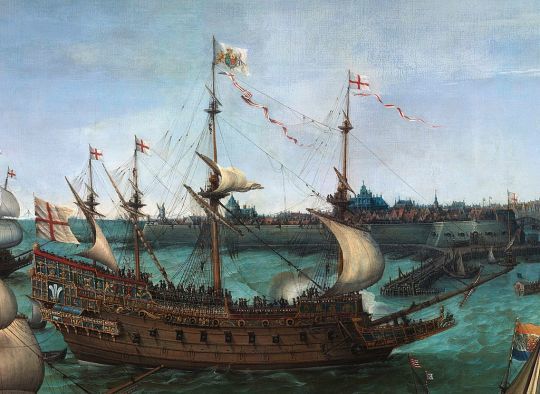
The "standing cup" was a large bowl made of precious metal. As the ship began to slide down the ramp, the official in charge would take a ceremonial sip of wine from the cup and pour the rest onto the deck or over the bow. Generally, the cup was thrown overboard and belonged to the lucky person who retrieved it.
As the Marines grew larger and launches became more frequent, economy dictated that the costly cup be collected in a net to be reused for further launches. By the end of the 17th century in Great Britain, the "standing cup" ceremony had been replaced by the practice of breaking a bottle on the bow.
Changing conventions
The tradition of the broken bottle is said to have originated with Miss Lavinia Fannig Watson, a Philadelphia society girl who first broke a bottle of wine and water on a sloop of war, the Germantown, in 1846.
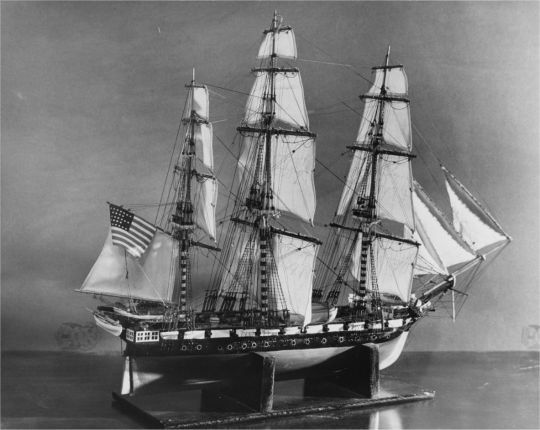
The triumph of champagne
Today, champagne plays a central role in the blessing of ships. Associated with happiness and good luck, it has relegated bloodthirsty pagan rites to the past. The boat's godmother breaks a bottle, saying a few words to wish the boat a safe passage. To bring good luck to the boat, the bottle has to break on the hull the first time.
Bottles are usually slightly sawn in advance, and it is now preferable to strike them against the anchor so as not to damage the hull. To prevent the bottle from refusing to break on the hull, a sure sign of misfortune, it should be thrown at high speed, so that it breaks and the foam spreads over the hull. The impact should be loud to ward off evil spirits.

Defining roles
As for the tradition of godmothers, it was born of the symbolic connection between the blessing of a boat and the baptism of children in the Catholic tradition. In the past, the boat's godmother was usually the owner's wife, but nowadays, shipowners, sponsors and skippers have taken to calling on celebrities or well-known sailors.
A French tradition
It is believed that it was in France, during the 18th century, that the champagne blessing of ships was introduced, and quickly became a custom followed in other countries. At the launch of the first modern transatlantic, the Great Britain, on July 19, 1843, a crowd of thirty thousand people, including Prince Albert of Saxe-Coburg, grandfather of the Emperor of Germany and husband of Queen Victoria, was present.
When the local MP's mother missed with the traditional bottle of champagne, Prince Albert quickly intervened, grabbing a second bottle and smashing it against the ship's iron bow. It was a symbolic moment. The France, France's last transatlantic liner, also had its memorable moment when a bottle of champagne, Charles Heidsieck, was thrown by Madame Charles de Gaulle.
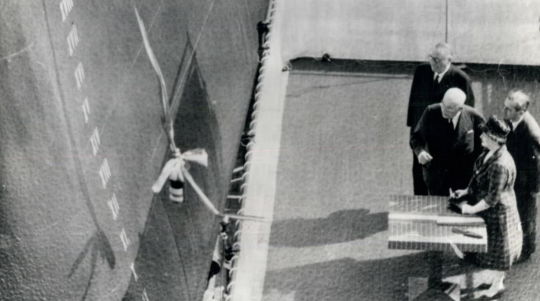
Unbroken bottles and thwarted destinies
When the bottle doesn't burst, fate wonders. Despite meticulous preparation, sometimes the bottle refuses to break, leaving the shadow of a bad omen hanging over it. There are stories of unlucky ships whose bottles failed to do their job at launch, triggering tragic events.
Pamela Vandyke Price tells the story of what happened in 1853 to the four-masted Great Republic, then the largest ship in the world. The bottle of champagne intended for her blessing was drunk during the night by a thief and not replaced. The ship caught fire shortly after launching, and for many years the story was told of how the builder's negligence in not buying another bottle of champagne almost brought him to ruin.
It has been claimed that the Titanic, which sank on its maiden voyage in 1912, did not have the traditional champagne ceremony. As recently as 1980, some were tempted to blame Olivier de Kersauson's sinking during the Atlantic crossing on the fact that the champagne bottle hadn't broken during the launch of his trimaran.
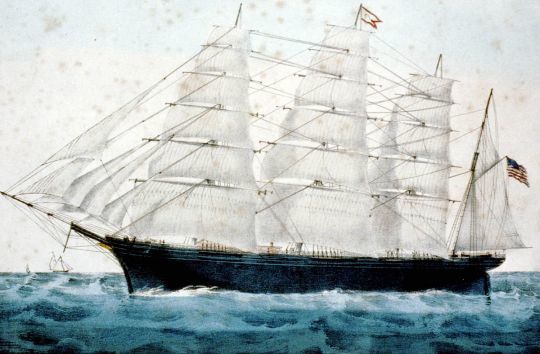
Today, every precaution is taken to ensure that the ceremony takes place in accordance with the rules, for the safety of the vessel and the pleasure of the many spectators. The bottle is weighted down with lead, so that it doesn't bounce and break on impact.
It's attached to a ribbon, and the godmother, usually at the touch of a button, triggers the race, whose trajectory is regulated to avoid any incident, such as the one that occurred in 18th-century England, when a princess of Hanover threw a bottle of champagne at a ship, hitting a spectator in the head, who sued the Admiralty.
Spare bottles are provided, and in 1980, at the launch of an oil tanker, when the first bottle had failed, the godmother took the initiative of launching a second one directly and hitting its target with force and precision, the champagne spilling over the bow to the great satisfaction of those present.
A little humor
The rite has given rise to many humorous fictions, such as the cartoon depicting a godfather in a top hat reading the label before tossing the bottle and saying: ''A 1955 vintage, what a shame!'' or, in the cinema, in Robert Dhéry's Le Petit baigneur, during the inauguration and blessing of the speedboat L'Increvable, the bottle of champagne, thrown by an energetic godmother, making a hole in the hull!
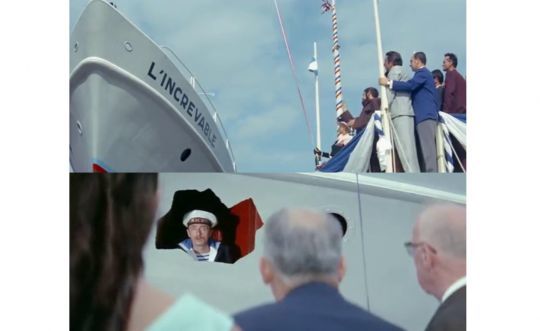
For example, breaking a bottle on the hull of a boat as it is being launched is not simply a formality, but the embodiment of an age-old heritage. While a certain mysticism persists, a festive contemporary practice has now taken over, linked to the culmination of the work of all those involved in the ship's construction and the birth of a new voyage.

 /
/ 